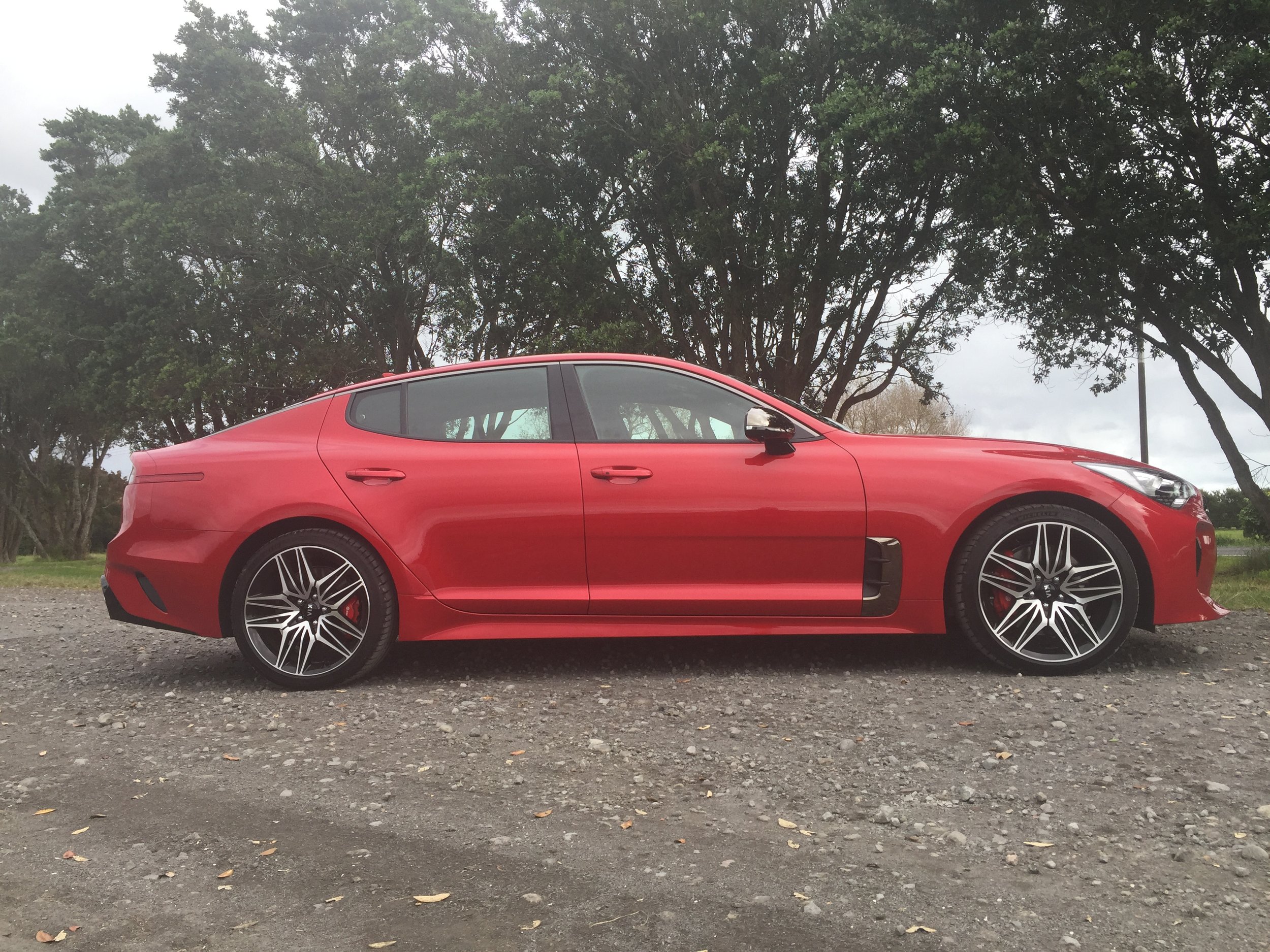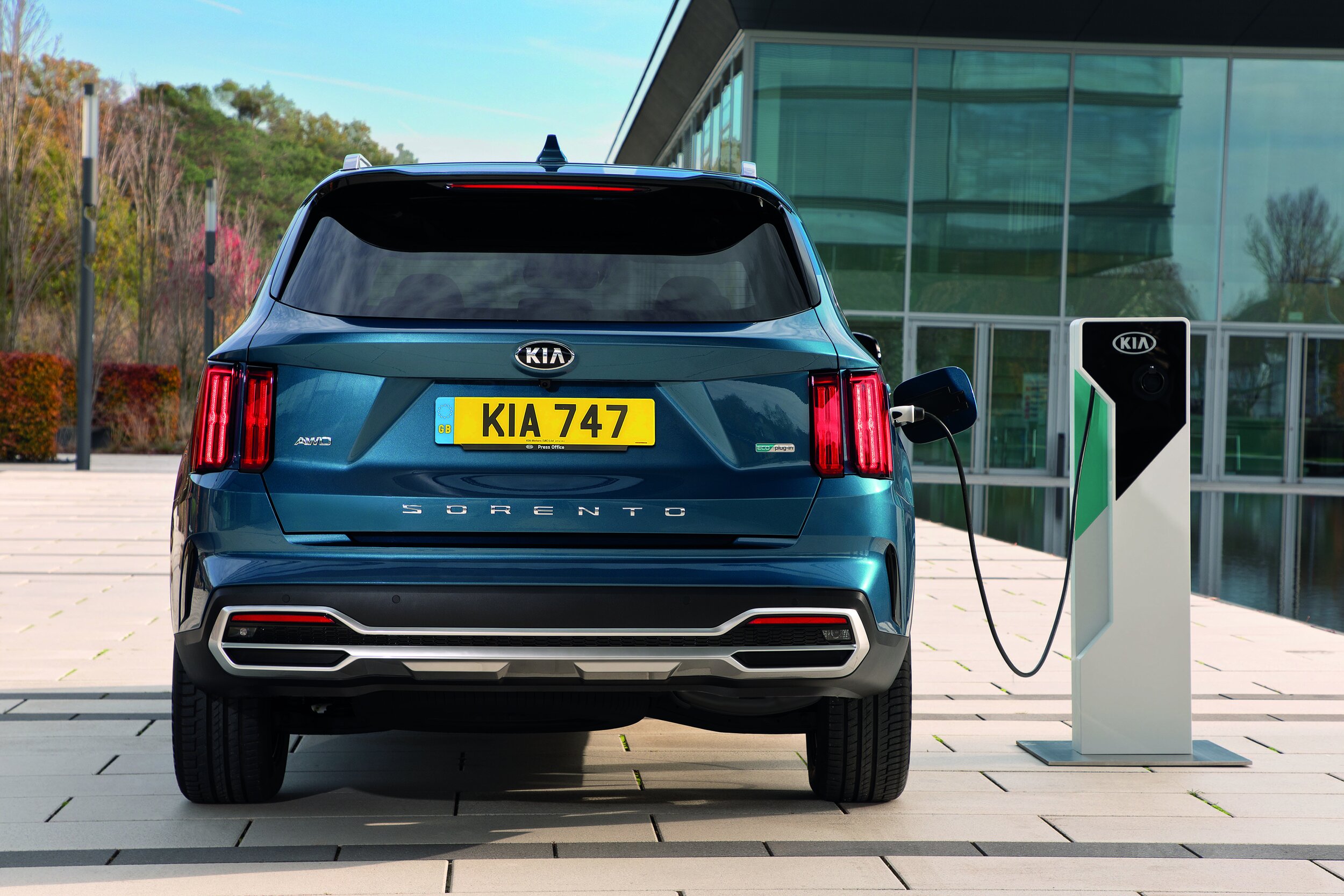End of the road for Stinger, diesel Sorento
/Plan S is a push toward sustainability – but it also means sacrifice in the local Kia line-up.
With diesel dropped, Sorento (above) will plug on purely in petrol-electric formats, while the Stinger (below) has been retired completely.
SUSTAINABILITY - in mobility, the planet and energy: That’s the word that has inspired Kia internally to launch a new strategy it calls Plan S, but here it also means sacrifice.
The end game of Plan S is for Kia to achieve carbon neutrality throughout its value chain by 2045.
New Zealand is included, but not without pain.
In announcing plans for a shift to greater Green-ness, the local distributor has also linked in determination to drop, with immediate effect, its high profile Stinger sedan and an evergreen engine choice for a popular sports utility, the Sorento.
Losing the Stinger impacts less volume-wise. For all the noise – mainly generated by motoring media - about how it’s been brilliant for Kia to have a performance rear-drive large sedan, the car has struggled to the point the home office has made clear the current car - which represents as a GT Line, with a 182kW/353Nm 2.0-litre, for $64,990 and as a $74,990 GT Sport with the 3.3-litre six-cylinder producing 274kW/510Nm – won’t continue into another generation.
There might well be greater lament for the diesel editions of the Sorento, whose 2.2-litre has been in the family for three generations and has historically been particularly popular with Kiwis, moreso than last year’s 482 registrations tally would suggest.
That modest result reflects an issue that appears to have only worsened; the diesel models have been severely supply-constrained for the past year, to the point where fulfilling an order reputedly takes more than 12 months.
Interestingly, Hyundai does not have the same issue with supply of its Santa Fe sister model, which is remaining on sale.
In Kia format, though, the end of the road for engine that, in the latest line, achieved a new fuel injection system and improved internal components, which helped to improve fuel economy and bump power, is with immediate effect.
Under Plan S, the seven-chair SUV will from now on present simply with petrol-electric units, in mild and plug-in recharged formats.
The battery models run a turbocharged 1.6-litre four producing 132kW/265Nm, but the electric motors and their feeder batteries are different.
With the PHEV there’s a 13.8kWh lithium-ion battery that delivers an optimal electric-only range of 57km per charge. The PHEV’s electric motor creates 67kW and 304Nm, whereas the hybrid has a 44kW electric motor and also has a smaller battery, rated at 1.5kWh.
The hybrids have between 30kW (hybrid) and 47kW (PHEV) more power than the diesel, but whereas the oiler generated 440Nm torque, the petrol-assisted units peak at 350Nm. This, and the different transmissions – the diesel ran an orthodox eight-speed automatic, whereas the hybrids have a constantly variable transmission – also impinges on towing; the hybrids max out at 1500kg. That’s 1000kg less than the diesel.
Economy-wise, the PHEV has astounding thrift when all systems are at optimal input (Kia claims 1.6 litres per 100km), but experience from our testing showed that once the battery loses will to input positively, fuel burn climbs. To as much as 3L/100km above the diesel’s cited 6.1L/100km.
The battery models also carry a premium. The diesel model line spanned from $59,990 to $76,990.
The cheapest hybrid is $63,990 in base front-drive EX trim, with an all-wheel-drive equivalent costing $2000 more. The cheapest PHEV is $82,990.
So, where’s the advantage? Most obviously, for Kia, in CO2 count: As little as 36 grams per kilometre worth of exhaust nasties from the PHEV is a much better-looking Green achievement than the diesel’s 159g/km.
And emissions are becoming everything. By 2045, Kia plans to reduce 97 percent of its 2019 level of carbon emissions.
Under Plan S, Kia's entire model range will transition to EVs in Europe by 2035. Other key global markets will follow with all-electric lineups by 2040.
Other local push implementations include determination to sell the plug-in version of the Sportage – though, with that family, the make is also offering a 2.0-litre diesel that more dated and emits higher emissions than the 1.6-litre compression ignition engine in its Hyundai equivalent, the Tucson.
Kia NZ has also indicated it wants to offer electrified variants of the Niro that are offered. The EV9 large electric SUV that has so far only been presented as a concept (at last month’s Los Angeles motor show) will likely make it here as well, the local distributor has indicated.
Kia NZ also seems to be saying that it will soon have examples of EV6 (above), its version of the Hyundai Ioniq 5. But it is not offering thought about the exact point in 2022 when that car will actually be available to buy.
The local line-up will include a flagship GT model that’s snappier than any version of the Ioniq 5. It takes a 77.4kWh battery paired with two electric motors, generating a combined 430kW and 740Nm. Kia claims 0-100kmh in 3.5 seconds.
Every other version will be a match for Hyundai’s choices. So, a base model and a mid-spec (GT-Line) with a standard 58kWh battery pack, 125kW/350Nm and 2WD, and with AWD and a larger 77.4kWh battery making 239kW/605Nm.




















